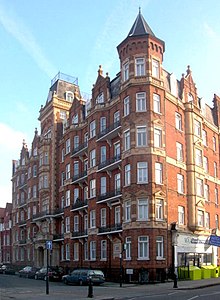Earl's Court is a district of Kensington in the Royal Borough of Kensington and Chelsea in West London, bordering the rail tracks of the West London line and District line that separate it from the ancient borough of Fulham to the west, the sub-districts of South Kensington to the east, Chelsea to the south and Kensington to the northeast. It lent its name to the now defunct eponymous pleasure grounds opened in 1887 followed by the pre–World War II Earls Court Exhibition Centre, as one of the country's largest indoor arenas and a popular concert venue, until its closure in 2014.

A Saucerful of Secrets is the second studio album by the English rock band Pink Floyd, released on 28 June 1968 by EMI Columbia in the UK and in the US by Tower Records. The mental health of the singer and guitarist Syd Barrett deteriorated during recording, so David Gilmour was recruited; Barrett left the band before the album's completion.

Belgravia is a district in Central London, covering parts of the areas of the City of Westminster and the Royal Borough of Kensington and Chelsea.

The Madcap Laughs is the debut solo album by the English singer-songwriter Syd Barrett. It was recorded after Barrett had left Pink Floyd in April 1968. The album had a lengthy recording history, with work beginning in May 1968, but the bulk of the sessions taking place between April and July 1969, for which five different producers were credited − including Barrett, Peter Jenner, Malcolm Jones, and fellow Pink Floyd members David Gilmour and Roger Waters. Among the guest musicians are Willie Wilson from Gilmour's old band Jokers Wild and several members of Soft Machine.

The Italianate style was a distinct 19th-century phase in the history of Classical architecture. Like Palladianism and Neoclassicism, the Italianate style combined its inspiration from the models and architectural vocabulary of 16th-century Italian Renaissance architecture with picturesque aesthetics. The resulting style of architecture was essentially of its own time. "The backward look transforms its object," Siegfried Giedion wrote of historicist architectural styles; "every spectator at every period—at every moment, indeed—inevitably transforms the past according to his own nature."
Wetherby School is a group of private schools for boys aged two to eighteen in Notting Hill, Kensington, and Marylebone, London, owned and operated by the Inspired Education Group. Its prep school is a member of the Independent Association of Preparatory Schools.
"Set the Controls for the Heart of the Sun" is a song by the English rock band Pink Floyd, appearing on their second album, A Saucerful of Secrets (1968). It was written by Roger Waters, taking lyrics from a Chinese poetry book, and features a drum part by Nick Mason played with timpani mallets. It is the only song recorded by Pink Floyd to feature material from all five band members, as there are several different guitar parts recorded by both David Gilmour and Syd Barrett, although the guitar parts are buried in the mix.

West Kensington, formerly North End, is an area in the ancient parish of Fulham, in the London Borough of Hammersmith and Fulham, England, 3.4 miles (5.5 km) west of Charing Cross. It covers most of the London postal area of W14, including the area around Barons Court tube station, and is defined as the area between Lillie Road and Hammersmith Road to the west, Fulham Palace Road to the south, Hammersmith to the north and West Brompton and Earl's Court to the east. The area is bisected by the major London artery the A4, locally known as the Talgarth Road. Its main local thoroughfare is the North End Road.

West Brompton is an area of west London, England, that straddles the boundary between the London Borough of Hammersmith and Fulham and Royal Borough of Kensington and Chelsea. The centuries-old boundary traced by Counter's Creek, probably marked the eastern edge of Fulham Manor since Saxon times and is now partly lost beneath the West London Line railway.
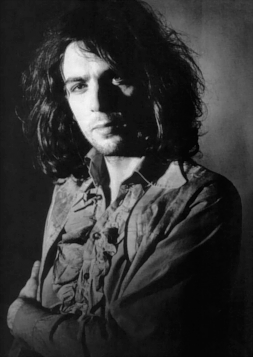
Roger Keith "Syd" Barrett was an English singer, guitarist and songwriter who co-founded the rock band Pink Floyd in 1965. Until his departure in 1968, he was Pink Floyd's frontman and primary songwriter, known for his whimsical style of psychedelia, English-accented singing, and stream-of-consciousness writing style. As a guitarist, he was influential for his free-form playing and for employing effects such as dissonance, distortion, echo and feedback.
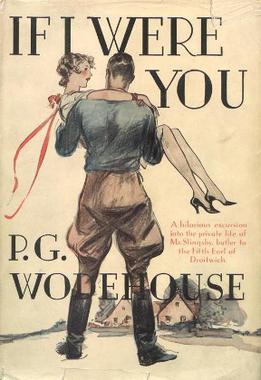
If I Were You is a novel by P. G. Wodehouse, first published in the United States on 3 September 1931 by Doubleday, Doran, New York, and in the United Kingdom on 25 September 1931 by Herbert Jenkins, London.

Pulteney Street is a main road which runs north-south through the middle of the eastern half of the Adelaide city centre, in Adelaide, South Australia. It runs north-south from North Terrace, through Hindmarsh and Hurtle Squares, to South Terrace, where it becomes Unley Road. It is the only one of the city centre's major north-south thoroughfares that does not continue northwards over North Terrace.

Brunswick Town is an area in Hove, in the city of Brighton and Hove, England. It is best known for the Regency architecture of the Brunswick estate.

The Pink Floyd and Syd Barrett Story is a 2001 television documentary produced by Otmoor Productions for BBC Two's Omnibus series and originally called Syd Barrett: Crazy Diamond. Directed by John Edginton, the film includes interviews with all the Pink Floyd members – Roger Waters, David Gilmour, Nick Mason and Richard Wright – plus the "fifth Pink Floyd", Bob Klose, who left the band in 1965, getting their points of view on the original band founder Syd Barrett. The film includes rare early television appearances of Pink Floyd, and home movies.

Douglas Arthur Peter Field, known as Duggie Fields, was a British artist who resided in Earls Court, London.
Pink Floyd bootleg recordings are the collections of audio and video recordings of musical performances by the British rock band Pink Floyd, which were never officially released by the band. The recordings consist of both live performances and outtakes from studio sessions unavailable in official releases. In some cases, certain bootleg recordings may be highly prized among collectors, as at least 40 songs composed by Pink Floyd have never been officially released.
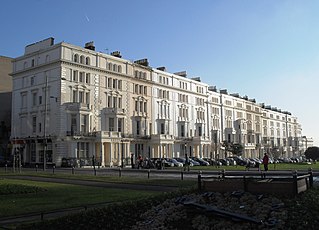
Palmeira Square is a mid-19th-century residential development in Hove, part of the English city and seaside resort of Brighton and Hove. At the southern end it adjoins Adelaide Crescent, another architectural set-piece which leads down to the seafront; large terraced houses occupy its west and east sides, separated by a public garden; and at the north end is one of Hove's main road junctions. This is also called Palmeira Square, and its north side is lined with late 19th-century terraced mansions. Commercial buildings and a church also stand on the main road, which is served by Brighton & Hove bus routes 1, 1A, N1, 2, 5, 5A, 5B, N5, 6, 25, 46, 49, 60, 71, 71A and 96.

Holland House, originally known as Cope Castle, was an early Jacobean country house in Kensington, London, situated in a country estate that is now Holland Park. It was built in 1605 by the diplomat Sir Walter Cope. The building later passed by marriage to Henry Rich, 1st Baron Kensington, 1st Earl of Holland, and by descent through the Rich family, then became the property of the Fox family, during which time it became a noted gathering-place for Whigs in the 19th century. The house was largely destroyed by German firebombing during the Blitz in 1940 and today only the east wing and some ruins of the ground floor and south facade remain, along with various outbuildings and formal gardens. In 1949 the ruin was designated a grade I listed building and it is now owned by the Royal Borough of Kensington and Chelsea.
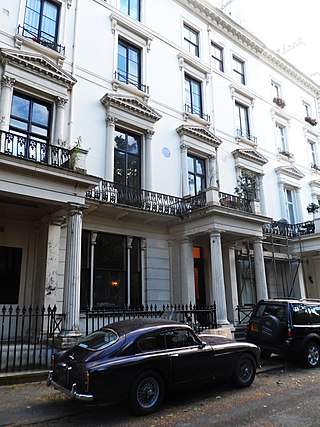
Westbourne Terrace is a street in the Paddington district of the City of Westminster in west London. The street runs between Westbourne Bridge in the north and the junction of Westbourne Crescent and Sussex Gardens in the south and was developed between 1839 and the late 1850s. It has been described as the "most spacious and dignified avenue" in Bayswater and "unrivalled in its class in London or even Great Britain". The street is not to be confused with Westbourne Terrace Road which runs north from Westbourne Bridge into Little Venice, and a large number of other Westbourne streets in the area.

Philbeach Gardens is a communal garden square in the Earl's Court district of the Royal Borough of Kensington and Chelsea.



